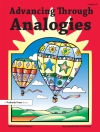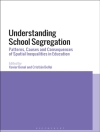What makes behavior deviant, and who gets to decide what deviance is? Deviant Behavior seeks to answer these questions and more. This compelling new text covers the social forces that shape deviance, the motivations and consequences of deviant behaviors, and how our definition of deviance changes over time. Authors John A. Humphrey and Frank Schmalleger discuss a wide range of deviant behaviors—from criminal acts to extreme forms of everyday behavior—and provide students the necessary foundation to understand the impact of globalization on traditional and emerging forms of deviance. Readers will explore deviance in the modern world using a systematic application of social and criminological theories to a range of deviant behaviors to help them better understand themselves, others, and society.
Included with this title:The password-protected Instructor Resource Site (formally known as SAGE Edge) offers access to all text-specific resources, including a test bank and editable, chapter-specific Power Point® slides.
Innehållsförteckning
Preface
Acknowledgments
About the Authors
CHAPTER 1 • Introduction to the Study of Deviant Behavior
Introduction
Defining Deviant Behavior
Dimensions of Deviance
Functions of Deviant Behavior
Globalization and Deviant Behavior
The Theme of This Book
A Conceptual Framework for the Study of Deviance
Book Overview
Chapter Summary
Key Concepts
Critical Thinking Questions
CHAPTER 2 • Theories of Deviant Behavior: I Classical Theories
Introduction
Evidence-Based Behavior Analysis
What Is a Theory?
Criteria for Evaluating a Theory
The Classical School
Societal Reaction/Labeling Perspective
Social Control Theory
New Theoretical Approaches
Chapter Summary
Key Names
Key Concepts
Critical Thinking Questions
CHAPTER 3 • Theories of Deviant Behavior: II Contemporary Perspectives
Introduction
The Conflict Perspective
The Functionalist Perspective
Differential Association/Social Learning
Ronald Akers’s Social Learning Approach to Deviance
Chapter Summary
Key Names
Key Concepts
Critical Thinking Questions
CHAPTER 4 • Homicide
Introduction
Types and Definitions of Homicide, Assault, and Battery
Global Patterns of Homicide
Patterns and Trends in Criminal Homicide in the United States
Age, Gender, and Race Patterns of Homicide in the United States
Homicide Victim–Offender Relationships
Theories of Criminal Homicide and Assaultive Behavior
Chapter Summary
Key Concepts
Critical Thinking Questions
CHAPTER 5 • Domestic Violence
Introduction
Legal Definitions
Social Definitions
Extent and Nature of Domestic Violence
Costs and Consequences of Domestic/Intimate Partner Violence
Risk Factors for Domestic Violence
Corporal Punishment
Theories of Domestic Violence
Chapter Summary
Key Concepts
Critical Thinking Questions
CHAPTER 6 • Suicide and Life-Threatening Behaviors
Introduction
Medical/Legal Definitions of Suicide
Suicide Around the World and in the United States
Patterns of Suicide
Precipitants of Suicide
Special Topics
Theories of Suicide
Chapter Summary
Key Concepts
Critical Thinking Questions
CHAPTER 7 • Mental Illness
Introduction
Nature of Mental Illness
The Epidemiology and Costs of Mental Illness
Prevalence of Mental Disorders in the United States
Theoretical Explanations of Mental Illness
Chapter Summary
Key Concepts
Critical Thinking Questions
CHAPTER 8 • Alcohol Abuse
Introduction
Definitions
DSM-5 Criteria for Alcohol Use Disorder
Alcohol Use Around the World
Substance Use in the United States
Culture and Alcohol Use
Religion, Spirituality, and Substance Use
Special Issues
Explanations of Alcohol Abuse
Chapter Summary
Key Concepts
Critical Thinking Questions
CHAPTER 9 • Illicit Drug Use
Introduction
Definitions
Illicit Drug Use Around the World
Illicit Drug Use in the United States
Marginal Populations
Explanations for Illicit Drug Dependence
Chapter Summary
Key Concepts
Critical Thinking Questions
CHAPTER 10 • Sexual Offending
Introduction
Definitions of Criminal Sexual Offending
Rates of Criminal Sexual Offending
Characteristics of Criminal Sexual Offending
Typology of Rapists
Prostitution
Online Sexual Solicitation and Child Pornography
Consequences of Childhood Sexual Victimization
Explanations for Criminal Sexual Offending
Chapter Summary
Key Concepts
Critical Thinking Questions
CHAPTER 11 • Property Crimes
Introduction
Statutory Definitions
Rates in the United States
Property Crimes Around the World
Victims of Property Crimes
Costs of Property Crime
Victim–Offender Relationship
Criminal Decision Making
Types of Thieves
Theoretical Explanations
Chapter Summary
Key Concepts
Critical Thinking Questions
CHAPTER 12 • White-Collar and Organized Crime
Introduction
White-Collar, Corporate, and Government Crime
Definitions and Forms of White-Collar Crime
Extent of White-Collar Crime
Extent of Organized Crime
Theoretical Explanations
Chapter Summary
Key Concepts
Critical Thinking Questions
CHAPTER 13 • Cyberdeviance
Introduction
Types of Computer Crimes
Extent and Patterns of Cybercrime
Methods of Cyberdeviance
Typology of Cyberdeviants
Cyberdeviant Subculture
Ethics and the Cyberdeviant
Cyberdeviance Motivation
Sexting: Internet Crime, Deviance, or Neither?
Theories of Cyberdeviance
Chapter Summary
Key Concepts
Critical Thinking Questions
CHAPTER 14 • Positive Deviance
Introduction
Positive Deviance Defined
Characteristics of Positive Deviants
Explanations of Positive Deviance
Chapter Summary
Key Concepts
Critical Thinking Questions
CHAPTER 15 • Extreme Forms of Everyday Behaviors: Working, Using the Internet, and Exercising
Introduction
Extreme Forms of Everyday Behavior
Nature of Overwork
Computer and Internet Addiction
Extreme Sports
Theoretical Understandings of Extreme Forms of Everyday Behavior
Chapter Summary
Key Concepts
Critical Thinking Questions
CHAPTER 16 • Terrorism
Introduction
What Is Terrorism?
Terrorism and Crime
Official Definitions of Terrorism
Extent of Worldwide Terrorism
Typology of Terrorism
Terrorist Organizational Structure
Terrorist Organizational Dynamics
Terrorism: Psychopathology Versus Rational Behavior
Cyberterrorism
Explanations for Terrorism
Chapter Summary
Key Concepts
Critical Thinking Questions
Glossary
References
Index
Om författaren
Frank Schmalleger is Distinguished Professor Emeritus at the University of North Carolina at Pembroke (UNCP). Schmalleger taught criminal justice courses and chaired the Department of Sociology, Social Work, and Criminal Justice for nearly 20 years while at UNCP. He is the author of more than a dozen textbooks in the justice field.












